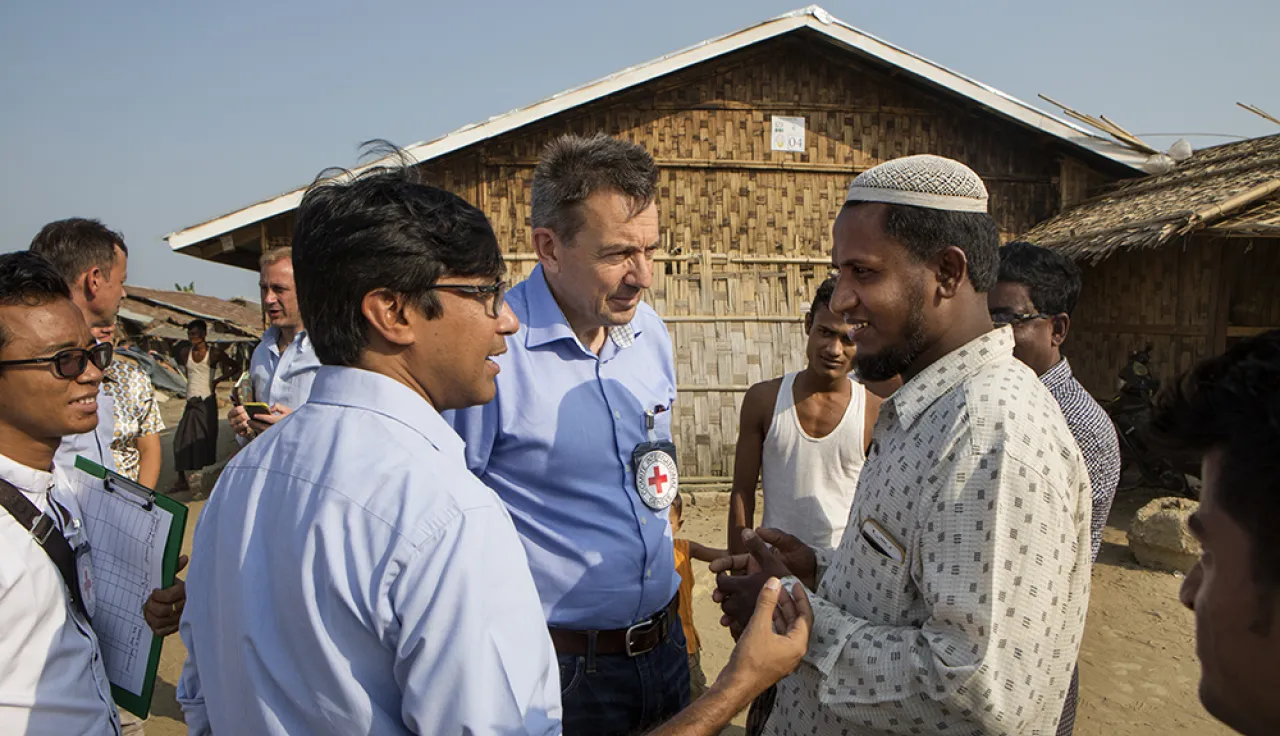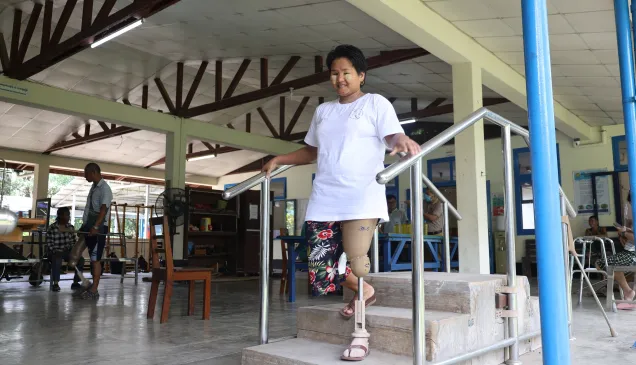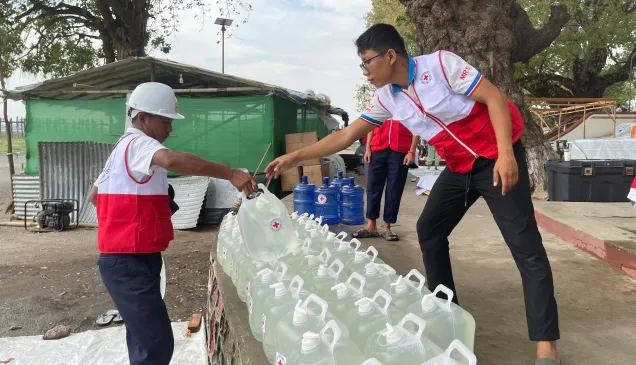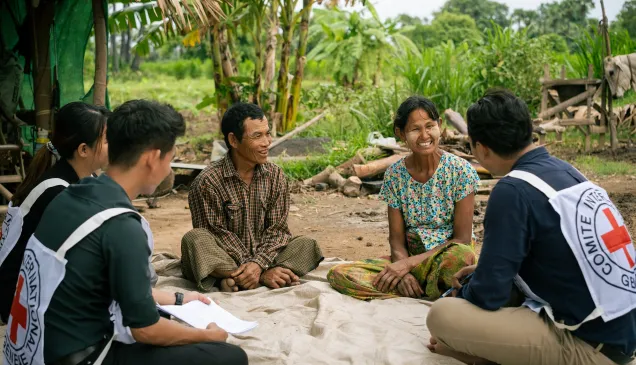Myanmar: Beyond emergency relief

ICRC President Peter Maurer visited Myanmar last week where, in parts of the country, people are still suffering after decades of conflict and violence. In this interview, he shares his impressions.
Rakhine state has attracted a lot of public attention, especially in recent months. What’s your take on the situation there?
I went back to the same township in Sittwe that I visited four years ago. There has clearly been some progress in terms of access to water, and health facilities. However, I also sensed a lot of frustration, which cannot be addressed by humanitarian action alone. People in Rakhine continue to suffer from decades of underdevelopment and tension between communities. Many are directly affected by the ongoing violence, including those who have fled their homes in Myanmar for Bangladesh.
I met a camp leader who was frustrated because for four years they have been restricted to the camp. People can't leave or return home because they fear what will happen to them. They can't easily work or run businesses and are dependent on international aid. They also can’t travel to the central hospital in Sittwe, which is outside of the camp, by themselves. So after extensive negotiations, the Ministry of Health (MoH) set up a transport programme with the support of the ICRC. On my visit I saw that people have a better chance to access health care, when an ambulance arrived to transport a pregnant woman and a critical stroke patient.
Since March this year, the ICRC access to affected areas of northern Rakhine has been gradually improving and we’ve been able to resume our activities. While this is encouraging, it is still too early to know fully what this will mean for the humanitarian situation.
How is the ICRC’s confidential dialogue with authorities helping in Rakhine?
At the beginning of the crisis in October 2016, we worked closely with the Myanmar Red Cross in northern and central Rakhine State to assist over 3,000 displaced people with drinking water and life-saving aid. We also delivered over 500 messages between family members that were separated because of the violence.
If our access expands, the ICRC and our partners will be able to reconnect more families, expand health programmes, improve access to clean drinking water, provide emergency shelter and strengthen livelihoods. We’ll also help develop the skills and expertise of the local Myanmar Red Cross branch.
We are pleased that the Myanmar authorities agreed to the ICRC’s proposal to restart regular prison visits in Rakhine State after a delay of several months.
I left Rakhine with the impression that while humanitarian action is important, and organizations are making progress, we need more sustainable solutions and more political will.

CC BY-NC-ND / ICRC
What about the conflict in the northeast? People don’t seem to know what is happening there.
While the intensity of the conflict in the northeastern part of the country has fluctuated over the years, we saw an increase in fighting in Kachin and in northern Shan states last year. Over 100,000 people are displaced in the northeast, and thousands more are affected by conflict. This is one of the longest conflicts in the world, which is not receiving a lot of attention.
Around this region, countless landmines lie hidden, posing a deadly threat to civilians. Six months ago, in partnership with the Ministry of Health and Sports, we opened the first physical rehabilitation center in the north of Myanmar. A second center also opened in Kyaing Tong last March. These centers help people improve their mobility, and also allow them to resume work and social activities.
In Kachin and Shan states, I was able to see the life-changing impact that the ICRC's cash-grants have had on displaced people. With the equivalent of about 200 US dollars, some have started small businesses like raising pigs or sewing.
I met Thangsan, a mother of two, who has been living in a camp for five years. She was displaced from the Laiza region. A year ago, she used a cash grant to buy a sewing machine, and now she can support her family and send her kids to school. These grants are seeing long term and sustainable changes in people’s lives.
What are your expectations for the ICRC’s future operations?
Overall, I appreciate the positive development in our dialogue with the government. Myanmar is the ICRC’s second-largest humanitarian operation in Asia, which reflects the nature of humanitarian needs and crises in the country. We do our utmost to provide a response that goes beyond emergency relief and which contributes to stability and development in support of peace processes. Our collaboration and support to strengthening the Myanmar Red Cross goes in that same direction. Long-term perspective is very important.



